
Strategically located on France’s southeastern coast, Marseille has been a cultural and economic center since ancient times. Originally founded as an ancient Greek colony, this Mediterranean city is now renowned for its vibrant culture and eye-catching landmarks, including the Old Port (Vieux-Port) and the Notre-Dame de la Garde Basilica. However, alongside the city’s famous sites are also a series of hidden gems that offer a refreshing respite from the otherwise overcrowded attractions.
Located a few kilometers south of the Vieux-Port in Endoume, between Fausse-Monet and Maldormé coves, this narrow sliver of craggy beach is bestowed with clear waters and relative isolation. In stark contrast to most of its citywide counterparts, this off-beat shore has neither sand nor facilities where sunbathers can bask under the Mediterranean sun.
Instead, Plage du Petit Nice is dominated by ivory-hued, flat rocks, which are surrounded by a permitter wall of an adjacent hotel complex, famous for its 3 Michelin star restaurant. Nevertheless, what this off-beat beach lacks in size and amenities, it more than makes up for in stunning views of the nearby Frioul Islands and more importantly, sheer serenity that persists even during the peak of the tourist season.
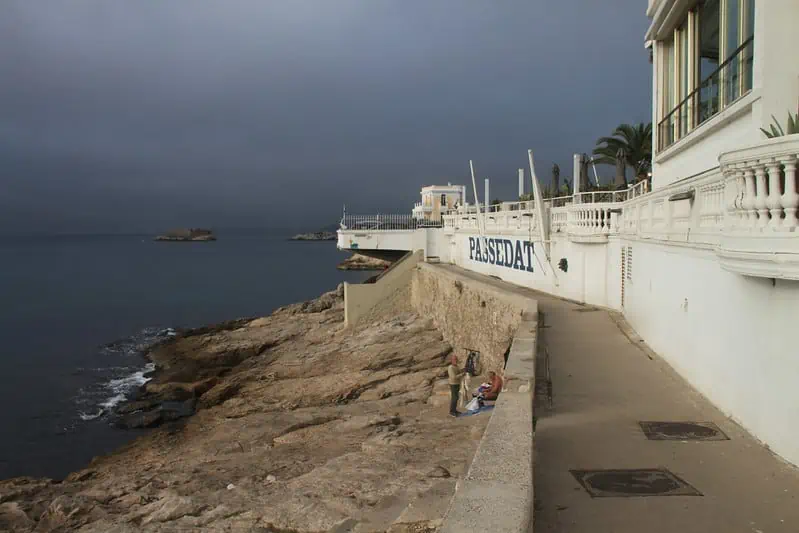
The secluded beach of Plage du Petit Nice
photography by: Jeanne Menjoulet/ Flickr
Long before Marseille was integrated into the realm of the Roman Empire, it was mostly inhabited by Greek and Celtic tribes. In fact, there are still numerous relics of that era scattered throughout the city. Tucked away on the northern outskirts of Marseille, Oppidum de Verduron comprises the ruins of a fortified town which dates back to the 3rd century BC.
Lying atop a 195-meter-tall mound, the oppidum had a very brief existence of a few decades or so, before its hilltop houses were wiped out by a catapult battalion. During its short heyday, the habitat was home to a tiny, yet thriving Celtic community whose members lived throughout the site’s 36 housing cells.
For centuries, the place was left in tatters, forgotten by time and buried under a thick layer of soil. That is, until 1905, when a local artist by the name of Stanislas Clastrier purchased the land and then discovered multiple artifacts while conducting earthworks. As part of the archaeological excavations that ensued, the elaborate habitat was unearthed and multiple pottery shards were salvaged. As of today, the site is open for visitors, who in turn can appreciate not only its historical merit, but also the glut of sweeping views from the top.
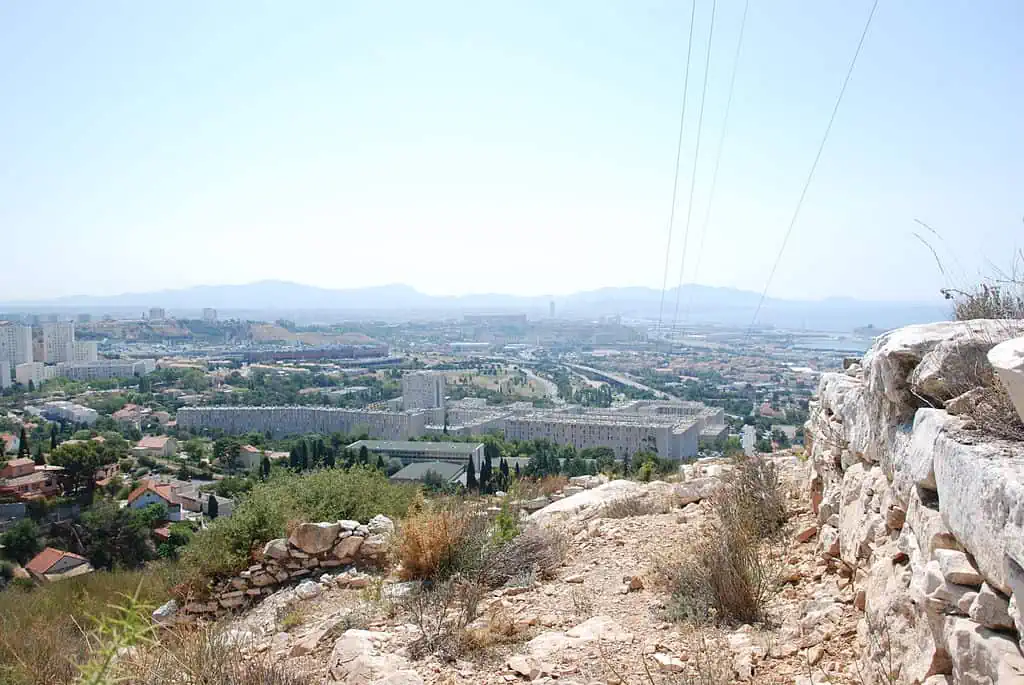
The panoramic views of Marseille as seen from the top of Oppidum de Verduron
photography by: Jddmano/ Wikimedia Commons
During the late 1990’s, the massive area along Jules Cantini Avenue in the city’s 10th arrondissement was still occupied by the old Pardo Station, from where freight trains frequently transported household waste to the Entressen landfill. As the city sought to reallocate the site for recreational use, it purchased this urban wasteland and then, in a matter of merely two years, erected a 10.5-hectare park which spans over the grounds of the former station.
As its name implies, Parc du 26ème Centenaire pays a tribute to Marseille’s 26 centuries of history, showcasing its rich cultural heritage. The unrivalled centerpiece of this green lung is a narrow, axial canal whose southern side borders four thematic gardens – the Provencal, Oriental, African, and Asian, each of which offers a glimpse of its respective geographic muse.
Visitors can also stroll through the semi-wooded pathways of the park’s landscaped lawn which is pierced by a 3-hectare pond. Lying atop a nearby verdant hill is a belvedere from where visitors can enjoy the stunning panoramic views of the park and the surrounding urban environment. The park’s entrance on the other hand is marked by the “Tree of Hope”, an eccentric fountain decorated with a multi-branch tree which artistically casts a pseudo-shadow on the adjacent pavement. Intriguingly, the tree’s fake shadow is inscribed with the names of half a million local residents, each of whom made a donation for this sumptuous project.
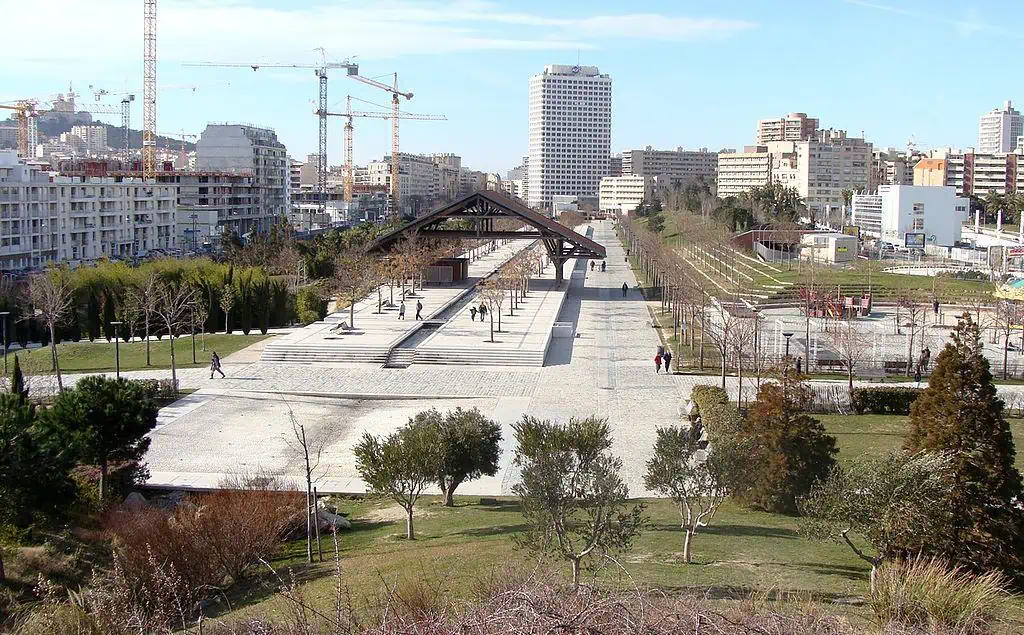
The park’s canal and nearby gardens
photography by: Fr.Latreille/ Wikimedia Commons
Probably among the most ubiquitous pieces of engineering in modern times, shipping containers are an indispensable component of international commerce. In recent years, though, this seemingly mundane box also became a building block for several pioneering architectural projects across the world.
Tucked away in a rather uninspiring location, next to a busy highway in the northern part of Marseille, MIF68 might not seem at first like a worthy place to explore. But that, apparently, couldn’t be further from the truth as this offroad center is home to an oddly-looking shopping complex, made entirely of cargo containers.
The brainchild of Dingguo Chen, a French-Chinese wholesaler, the center was inaugurated in 2018 as part of Chen’s attempt to promote the cooperation between French designers and textile manufacturers in China. Conceived by architect Mathieu Cherel, MIF68 is home to 95 multi-colored shipping containers, stacked on each other to create a Tetris-shaped structure, where over a hundred fashion boutiques and showrooms offer a colossal hodgepodge of garments.
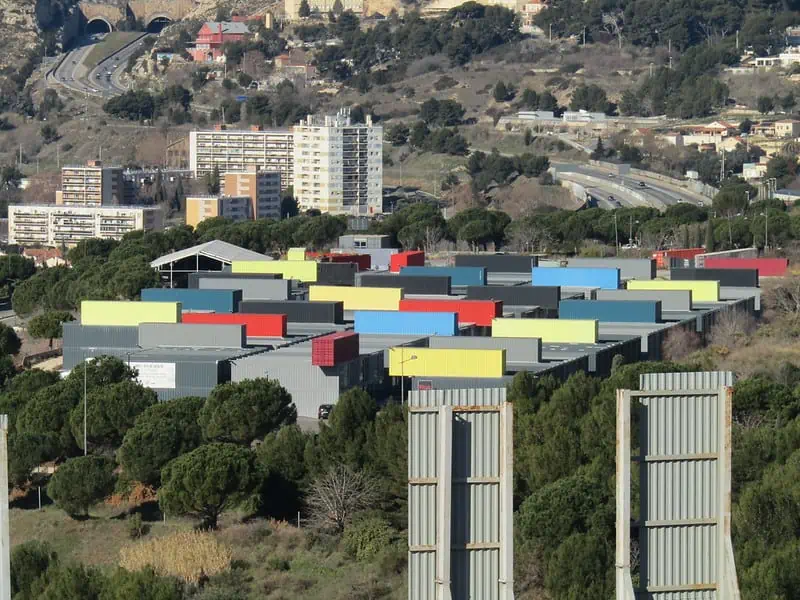
MIF68, as viewed from afar
photography by: Etienne Baudon/ Flickr
Lying roughly three kilometers off the coast of Marseille, the Frioul archipelago comprises 4 islands, spanning collectively over an area of no more than two km2. The largest of which, L’île de Pomègues, has been deemed a strategically important stronghold during the last 2 centuries or so, and therefore, its rocky terrain is peppered with multiple military facilities and forts.
Perching atop a formidable promontory at the southern tip of the island, Fort de Caveaux was originally built in the mid-19th century as an artillery battery amid the looming threats across the Mediterranean Sea. Throughout the years, the fortified facility was modified several times, most notably in 1943, when the invading German troops transformed it into a full-fledged bunker and ammunition depot.
Following the war, the battery was abandoned and subsequently fell into an alarming state of disrepair. Soon thereafter, the increasingly decrepit structure became a popular location for seagulls which established an ample bird colony within its rickety confines. As of today, entrance to the site is restricted due to the risk of collapse. Intrepid visitors who wish to explore the premises at their own risk, can in principle sneak in via a detour. Suffice to say that doing so entails an utmost caution and an average to strong fitness.
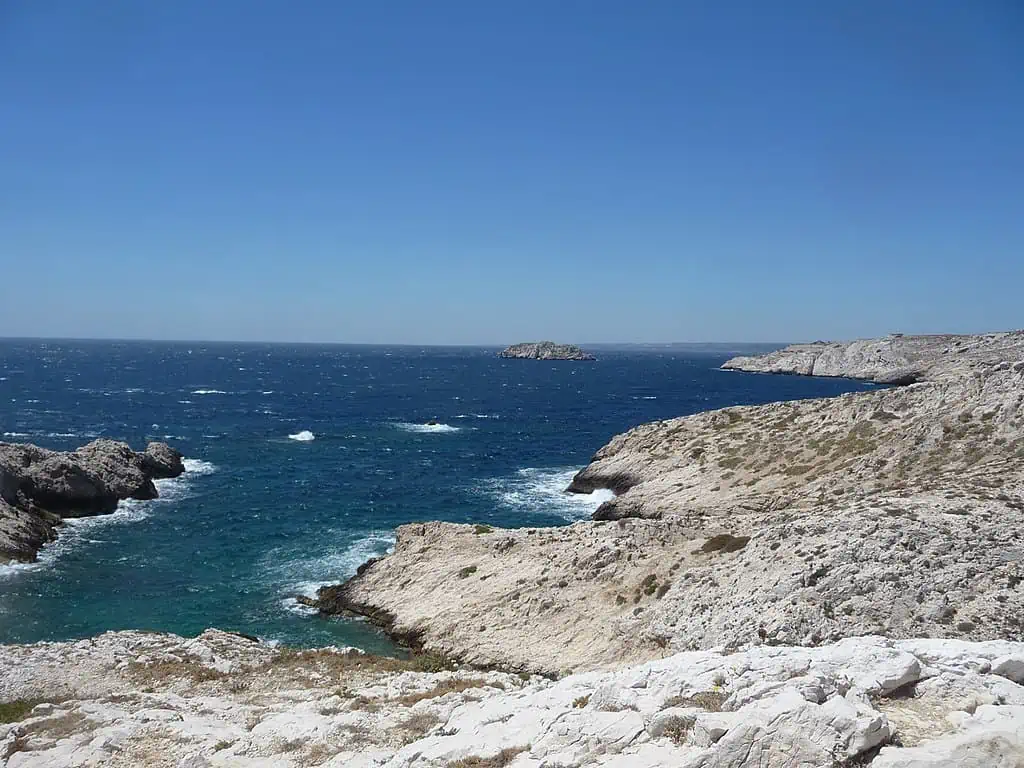
A close-by cove, L'île de Pomègues
photography by: Patrick Nouhailler/ Wikimedia Commons
When in 2016, the world’s most popular streaming service, Netflix, released the TV series “Marseille”, they found a somewhat unusual way of promoting their newly filmed drama. Inspired by the glamor of Hollywood, a massive 120-meter-long sign which comprises the letters of “Marseille” was erected on the slopes of Foresta hill, in front of the Grand Littoral shopping center in the northern part of the city.
Akin to its more famous counterpart in Los-Angeles, Marseille’s Hollywoodian monument consists entirely of capital letters, each of which is about 14 meter tall. Featuring globally renowned actors Gérard Depardieu and Benoît Magimel, the series was revolved around a fictional plot where a pair of local politicians are embroiled in a bitter conflict of corruption and power struggle.
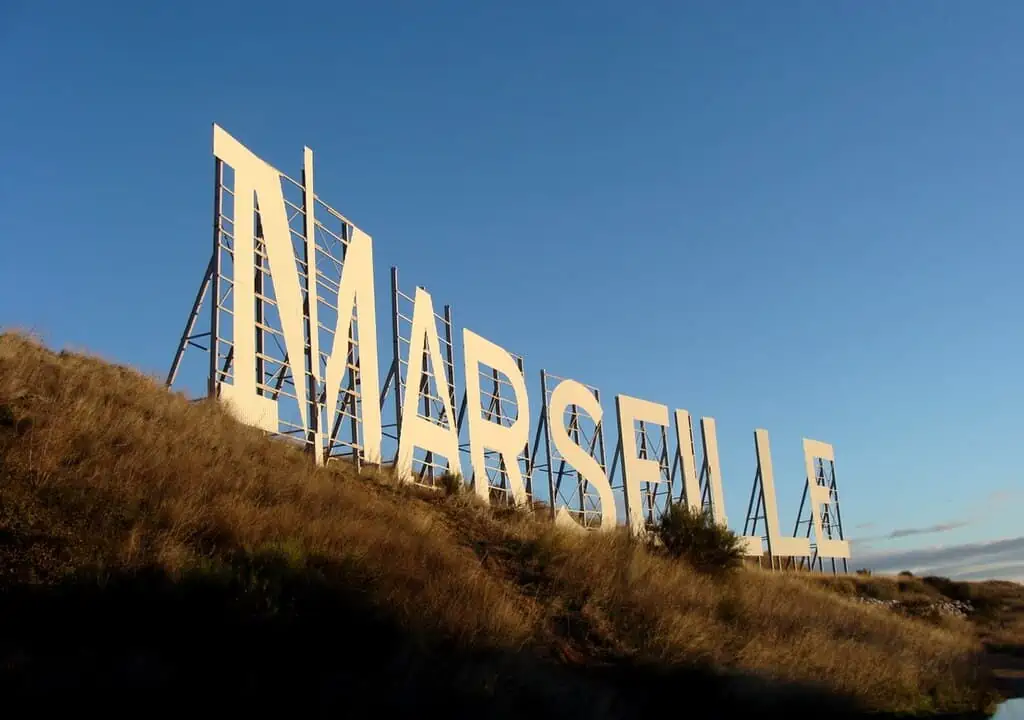
Lettres MARSEILLE, at their fullest glory
photography by: Fr.Latreille/ Wikimedia Commons
Ensconced in the rural periphery north of Marseille are the ruins of a formerly sumptuous estate by the name of Domaine Caussimont. Originally constructed in the 18th century, the mansion has served as the residence of several noblemen, including the Marquis de Marignane and Lord of Vitrolles, who probably used it as a lodge for his hunting excursions.
During the 20th century, the place was purchased by the Colonial Lime and Cement Company, subsequently becoming the home of its director, Andre Lindenmeyer. As part of the company’s social program, workers were given an incessant supply of fruits and vegetables, distributed right in the then lavish premises.
Due to high maintenance costs, the complex was ultimately abandoned and partially demolished to thwart the arrival of squatters. While nowadays, the site is completely tattered, there are still a couple of semi-preserved remnants to behold at. Besides the main building, the former estate is also home to a garden, a cooling cave and even a defunct dog house.
Established in 1949 as a mean to tackle Marseille’s citywide poverty and homelessness, the Emmaus movement was the brainchild of Abbé Pierre, a catholic priest and humanitarian who couldn’t sit ideally by as his fellow human beings were steeped in misery and despair. In the years that followed, Pierre founded a community center where a second-hand store offers a nonpareil medley of household goods.
Located in La Pointe-Rouge neighborhood, at the southern part of the city, Emmaüs Pointe Rouge collects thousands of donated items each year, including furniture, electric devices and clothing. The merchandise is then sorted, repaired and resold at extremely cheap prices to the lower echelons of society. It’s true that the center is a far cry from being a tourist attraction, yet its benevolent flee market is an interesting facet of the city which often remains well-hidden from the throngs of foreign visitors.